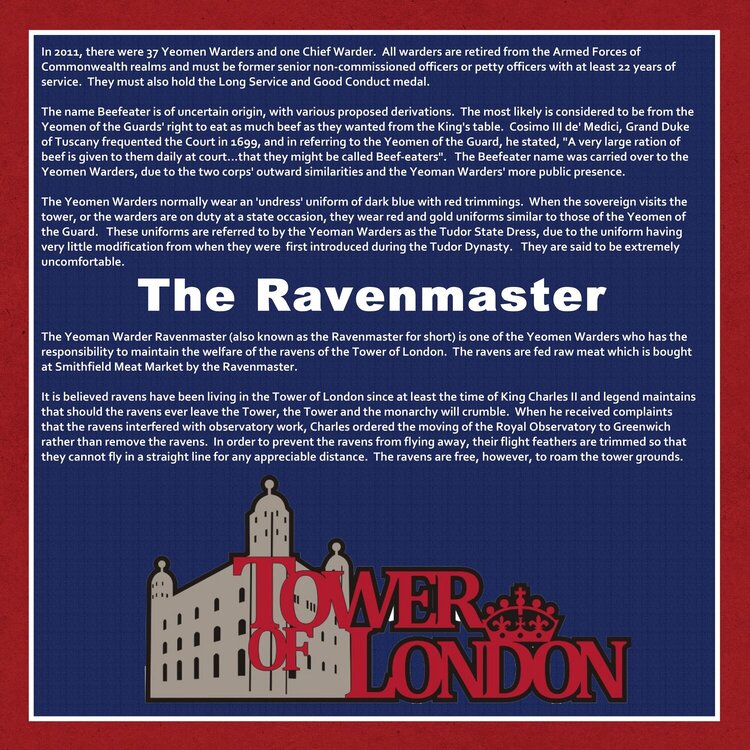

 Give a Cheer
Give a Cheer
In 2011, there were 37 Yeomen Warders and one Chief Warder. All warders are retired from the Armed Forces of Commonwealth realms and must be former senior non-commissioned officers or petty officers with at least 22 years of service. They must also hold the Long Service and Good Conduct medal.
The name Beefeater is of uncertain origin, with various proposed derivations. The most likely is considered to be from the Yeomen of the Guards' right to eat as much beef as they wanted from the King's table. Cosimo III de' Medici, Grand Duke of Tuscany frequented the Court in 1699, and in referring to the Yeomen of the Guard, he stated, "A very large ration of beef is given to them daily at court...that they might be called Beef-eaters". The Beefeater name was carried over to the Yeomen Warders, due to the two corps' outward similarities and the Yeoman Warders' more public presence.
The Yeomen Warders normally wear an 'undress' uniform of dark blue with red trimmings. When the sovereign visits the tower, or the warders are on duty at a state occasion, they wear red and gold uniforms similar to those of the Yeomen of the Guard. These uniforms are referred to by the Yeoman Warders as the Tudor State Dress, due to the uniform having very little modification from when they were first introduced during the Tudor Dynasty. They are said to be extremely uncomfortable.
The Ravenmaster
The Yeoman Warder Ravenmaster (also known as the Ravenmaster for short) is one of the Yeomen Warders who has the responsibility to maintain the welfare of the ravens of the Tower of London. The ravens are fed raw meat which is bought at Smithfield Meat Market by the Ravenmaster.
It is believed ravens have been living in the Tower of London since at least the time of King Charles II and legend maintains that should the ravens ever leave the Tower, the Tower and the monarchy will crumble. When he received complaints that the ravens interfered with observatory work, Charles ordered the moving of the Royal Observatory to Greenwich rather than remove the ravens. In order to prevent the ravens from flying away, their flight feathers are trimmed so that they cannot fly in a straight line for any appreciable distance. The ravens are free, however, to roam the tower grounds.
No products have been added to this project.
Thanks for spreading positivity!
August 14, 2016
July 19, 2016
July 15, 2016
July 12, 2016
July 11, 2016
July 11, 2016
July 11, 2016
July 11, 2016